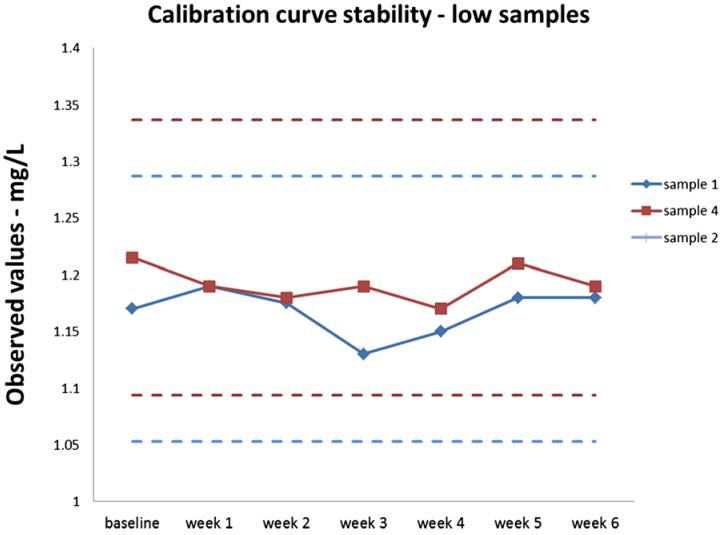Creative Biolabs is a world-class service provider in the in vitro diagnostics (IVD) industry who is skilled in the development of IVD assays. Supporting by the experienced leadership team and a well-established technical platform, we provide one-stop IVD assay development services for global clients. Turbidimetric immunoassay is a fast and reliable equilibrium turbidimetric immunoassay for a variety of disease marker detection. We can customize a personalized turbidimetric immunoassay-based disease marker detection according to your requirements.
Introduction of Turbidimetric Immunoassay
Turbidimetric immunoassay, also known as immunoturbidimetry or turbidimetry, is based on measuring the turbidity of a sample to determine the level of an analyte. This method is commonly used to quantify antigen-antibody complexes. The formation of antigen-antibody complex increases the turbidity of the sample. When light passes through the reaction solution, part of the light is scattered by the sample, part of the light is absorbed by the sample, and the rest of the light passes through the sample. The concentration of protein antigen in the sample is determined by measuring the absorbance of light from a sample. This assay has been widely used in clinical diagnosis, e.g., measurement of PAI-1 and serum C-reactive protein (CRP).
Nephelometryimmunoassay (immunonephelometry) is a related method of immunoturbidimetry and is also used to quantify antigen-antibody complexes by measuring the turbidity of the sample. But immunonephelometry measures the turbidity by measuring the light scattered at a fixed angle.
Latex-enhanced immunoturbidimetry (LETIA) is an optimization for conventional immunoturbidimetry. In LETIA, inert microscopic particles amplify the immune complexes, significantly increasing the sensitivity of the reaction and detection.
Immunoturbidimetry-based Serum CRP Detection
CRP is produced by the liver in response to inflammation. The level of CRP rises when there is inflammation in your body. Currently, most CRP determination is based on an immunoturbidimetry assay. A study used polyethylene glycol-6000 to accelerate and enhance the immunoprecipitation reaction and Tween-20 surfactant to lower and stabilize the sample blank values. Results showed immunoturbidimetry method is superior to radial immunodiffusion or nephelometry for serum CRP detection.
Our Capabilities
Integrating with the sensitive immunoturbidimetry method and rich expertise in IVD assay development, Creative Biolabs is committed to offering a flexible, sensitive immunoturbidimetry-based disease marker detection service, involving experimental scheme design and validation as well as large-scale sample testing. Besides, we also support immunonephelometry-based and LETIA-based assays. If you are interested in our services, please contact us to discuss your project and achieve more details. We are your reliable partner to develop novel specific IVD assays for disease diagnosis research.
Published Data
1. Development of a New Turbidimetric Immunoassay for Quantitative Determination of Serum Calprotectin for Fully Automatized Clinical Analyzers
 Fig.1 Calibration curve stability of the turbidimetric serum calprotectin immunoassay.1
Fig.1 Calibration curve stability of the turbidimetric serum calprotectin immunoassay.1
A particle-enhanced turbidimetric immunoassay (PETIA) was developed in this study, based on calprotectin values observed in intensive care unit samples, for detecting human calprotectin in serum or plasma. Polyclonal avian antibodies were generated and affinity-purified using calprotectin antigens. The assay demonstrated linearity within the range of 0.3-24.7 mg/L, with a lower limit of quantitation below 0.3 mg/L. No antigen excess was detected at concentrations up to 54 mg/L, and the precision study showed all coefficients of variation (CVs) were below 1.8%. The calibration curve remained stable for over six weeks, and no significant interference from hemoglobin or bilirubin was detected. The serum calprotectin immunoassay met the established performance criteria based on limited clinical experience in both serum and plasma, demonstrating robust accuracy and reliability.
Reference
- Nilsen, Tom, Kathrin Sunde, and Anders Larsson. "A new turbidimetric immunoassay for serum calprotectin for fully automatized clinical analysers." Journal of Inflammation 12 (2015): 1-8. Distributed under Open Access license CC BY 4.0, without modification.
For Research Use Only.

